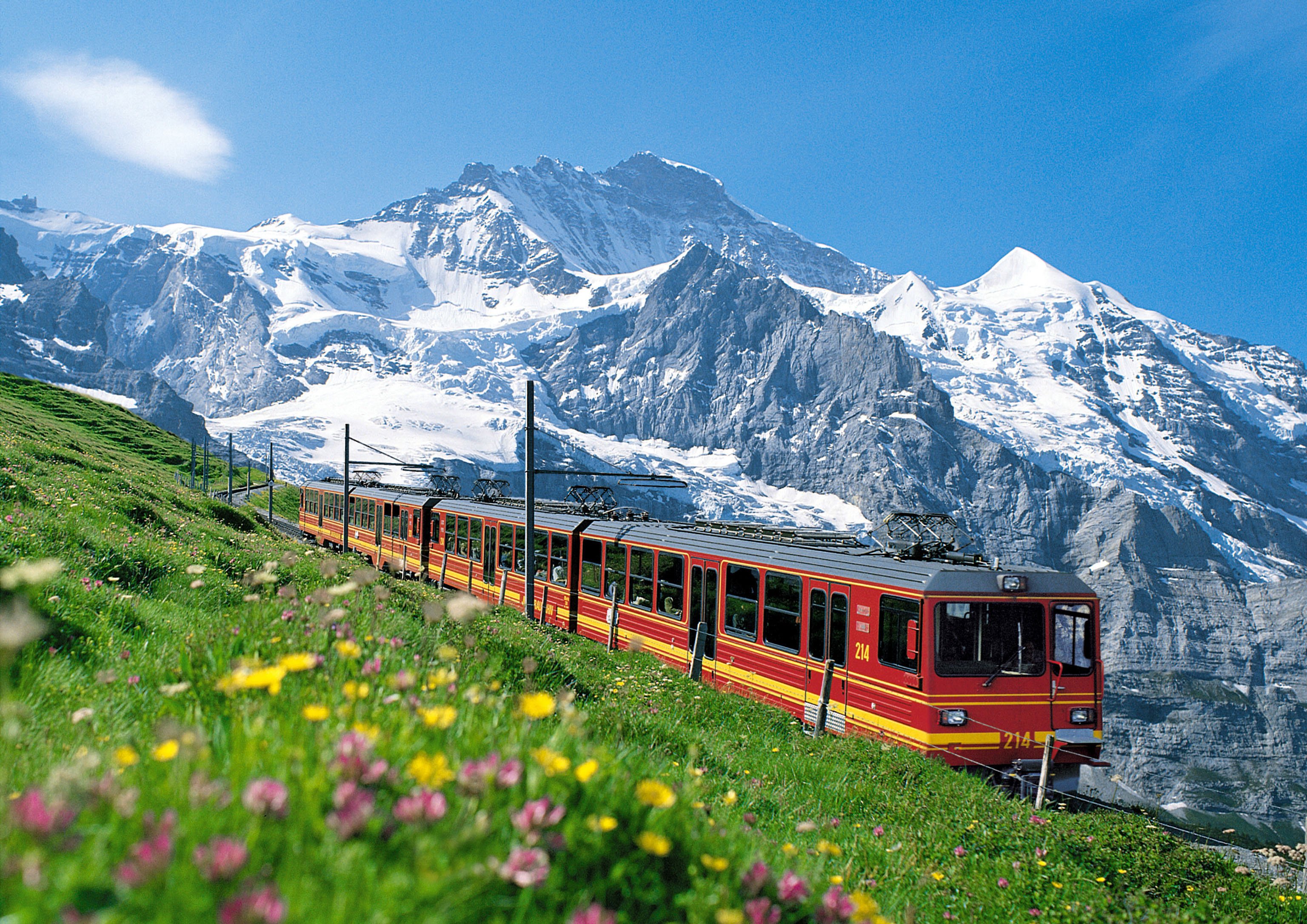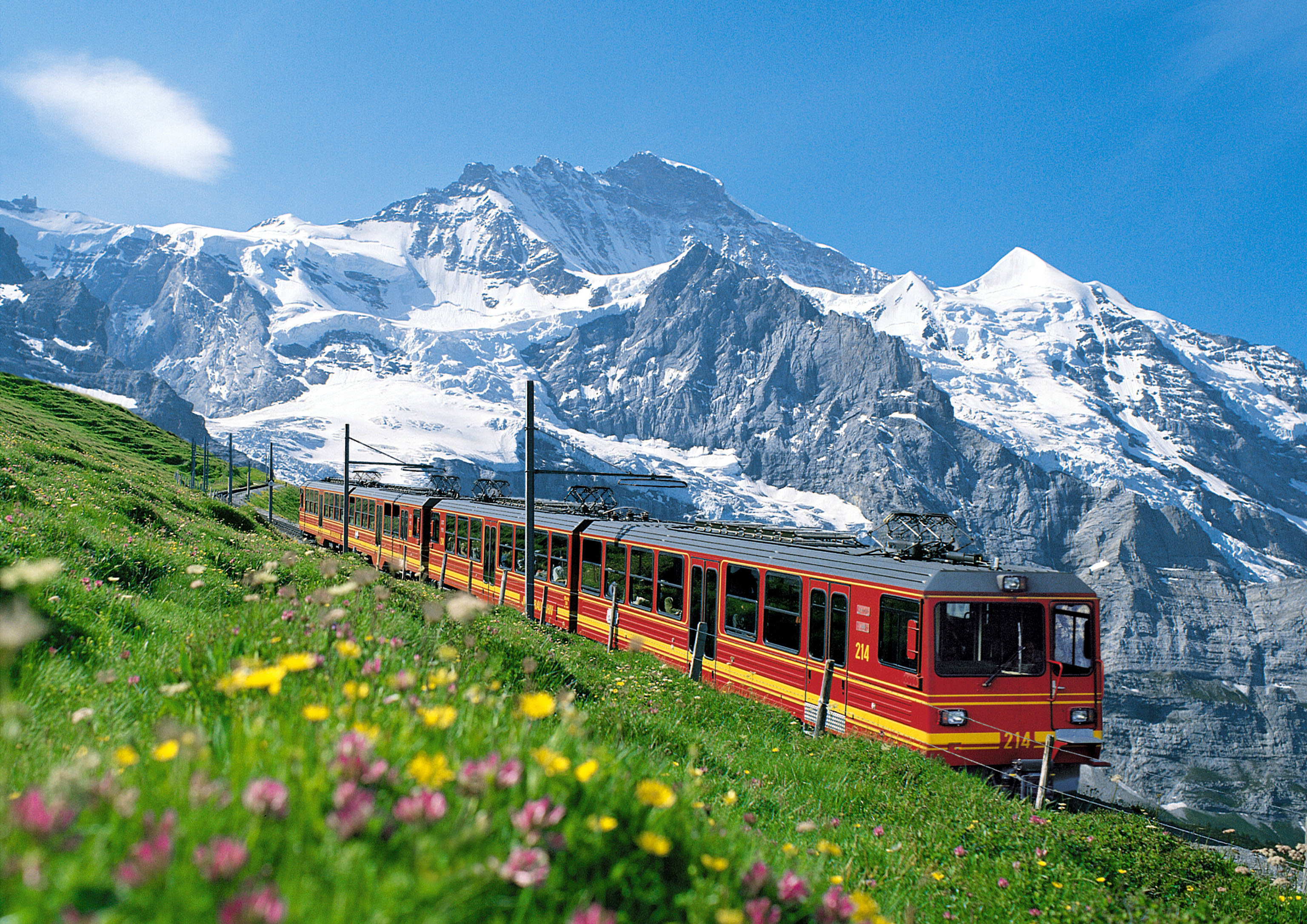Escaping the invisible pressure of common forms of public transport, traveling by train is really a way for visitors to get acquainted and fully immerse themselves in the atmosphere of a new country.
Besides the nostalgic feeling, traveling by train brings a slow, relaxing experience, living in every moment of the present. And if you are lucky enough to have a window seat, you can look out the window and enjoy the entire natural scenery outside.
“If all domestic and regional EU flights could be made by train, in less than four hours up to 36 million tonnes of carbon emissions would be saved each year,” said Naren Shaam, founder and CEO of travel technology company Omio.
Here are 10 amazing train journeys that every traveler should not miss once borders fully reopen in the coming time.
West Highland Railway, Scotland
Regularly topping the charts for the world's most scenic route, the West Highland Railway is a wonder of Scotland's natural beauty.
The route runs approximately 120 miles from Glasgow to Fort William at the foot of Ben Nevis – the UK’s highest mountain. The route is a vivid panorama of lakes, long valleys, desolate moors and majestic mountains.
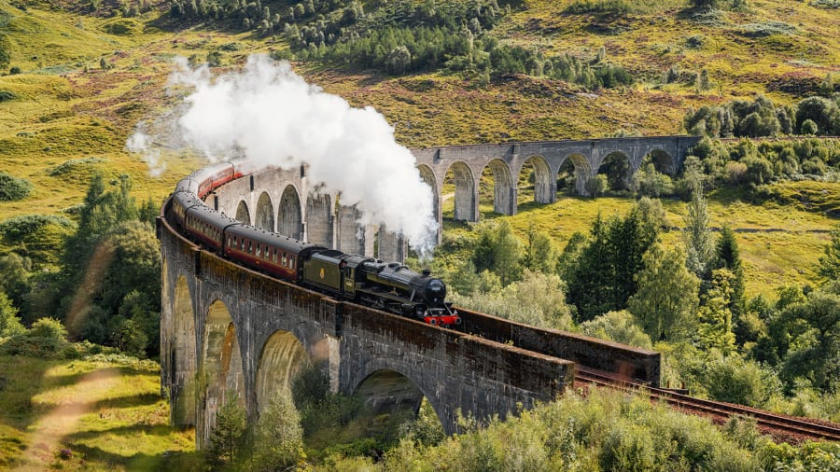
The route extends a further 66km to the west coast port of Mallaig, passing some of Scotland's most beautiful lochs and notably the stunning arched viaduct at Glenfinnan - the setting for the Harry Potter films.
Travellers can enjoy this route via the Caledonian Sleeper overnight train from London to Fort William, with breakfast included. And don’t miss the sight of the stags – the symbol of Scotland – roaming the highlands, surrounded by clouds, wind and earth.
Between April and October, the journey can also be enjoyed via another popular train – the Jacobite Steam Train. The train runs daily from Fort William to Mallaig and back, offering a chance to enjoy the scenery at a leisurely pace.
Trans-Iranian Railway, Iran
Considered a little-known gem, this amazing structure was recognized as a World Heritage Site by UNESCO in July 2021.
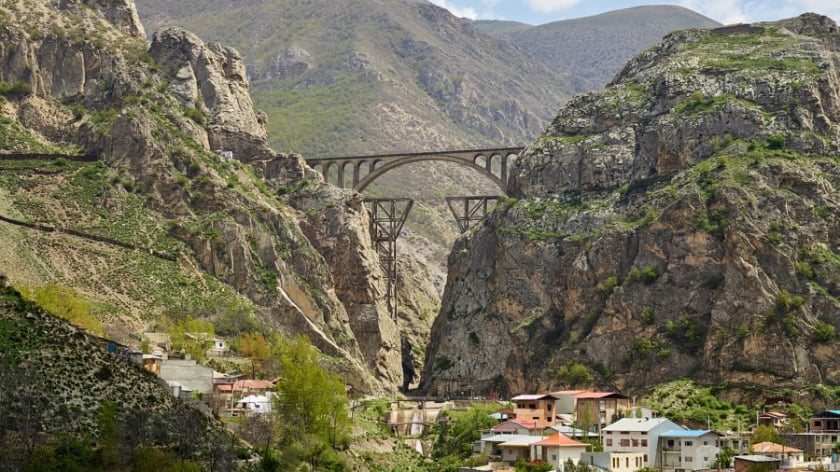
Connecting the Persian Gulf and the Caspian Sea, the railway opened in 1938 after 11 years of challenging construction. Although not widely known, it is one of the greatest engineering feats of the 20th century.
The route runs 1,394 km from Bandar-e Emam Khomeyni on the Persian Gulf to Bandar Torkaman on the Caspian Sea, passing through Ahvaz, Qom and Tehran. It is crisscrossed by 224 tunnels, nearly 400 bridges and reaches a peak elevation of 2,130 m.
The rugged terrain and harsh hot climate here required meticulous construction and skillful engineering to overcome the various geographical features. The result is one of the most memorable rail journeys in the world, but not everyone can experience it.
The Ghan, Australia
Vast and dangerous, the Australian outback is both exciting and full of pitfalls. Fortunately, this incredible landscape can be experienced on The Ghan. Named one of the world’s greatest rail journeys, The Ghan runs weekly on a 2,979km route that stretches the length of Australia from Adelaide in the South, through Alice Springs and then on to Darwin in the Northern Territory.
Each trip lasts over 53 hours, including stops at outposts like Coober Pedy for passengers to experience the outback on private tours.
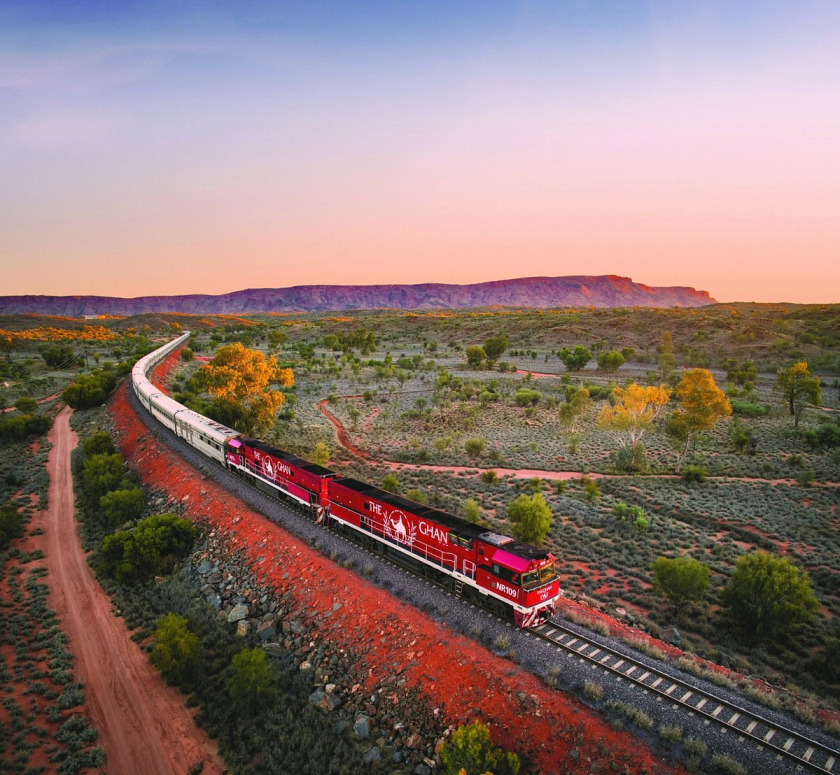
The stainless steel train, which includes a luxury dining car, private cabins with personal stewards, is a far cry from the trains that ran on this route between 1929 and 1980. The origin of the train's name is disputed, but most believe it derives from its earlier nickname, the "Afghan Express" - a reference to the Afghan camel drivers brought to Australia by the British in the late 19th century to help usher in the country's domestic affairs.
Qinghai-Tibet Railway, China
Previously, only adventurous travelers and explorers would venture to the Tibetan plateau, dubbed the “Roof of the World” because of its difficult transportation. But the opening of the Qinghai-Tibet Railway in 2006 opened a new chapter for the region, while also creating a connection with the Chinese railway network.
Sometimes called the “Railway to Heaven,” the 1,955-kilometer (1,215-mile) route from Xining in central China to Lhasa in Tibet culminates at Tanggula Pass at 5,068 meters (16,627 feet) above sea level. Nearly half of the route is at an elevation of 13,123 feet.
One of the greatest engineering feats of the early 21st century, the railway cost $4.2 billion to build. The challenges of its construction included working in an area prone to earthquakes at high altitudes, freezing temperatures, low air pressure, and permafrost.
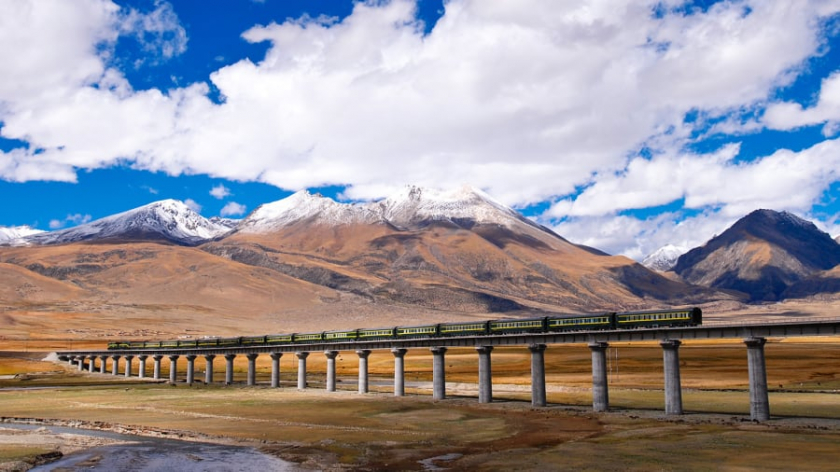
The train uses unique pressurized carriages that have been specially designed to help passengers minimize the effects of altitude sickness caused by low oxygen levels. Outside the train, passengers can enjoy stunning views of the pristine highlands, where yaks graze on grasslands nestled between towering snow-capped mountains. Highlights of the route include the Qiangtang Grasslands, Kekexili Nature Reserve, Namtso Lake and the Tanggula Mountains at the highest point of the journey.
Direct trains reach Lhasa from Beijing in about 40 hours and Shanghai in 47 hours. From 2030, when the $47.8 billion Sichuan-Tibet line is completed, high-speed trains will cut the 1,629 km distance from Chengdu to Lhasa, reducing the travel time from 48 hours to just 13 hours.
Darjeeling Himalayan Railway, India
Nicknamed the “Toy Train,” this British Empire creation remains one of the world’s greatest railway experiences, climbing some 2,134 metres on its winding 89-km route between New Jalpaiguri and the hill station of Darjeeling.

The railway was built between 1879 and 1881 to provide access to the cool Darjeeling mountains, allowing British colonists to escape the sweltering heat of Calcutta (now Kolkata). In 1998, the Darjeeling Himalayan region was declared a UNESCO World Heritage Site.
Today, the legendary B-Class steam locomotives from 1889 to 1925 still occasionally serve special trains, but most journeys are made using diesel locomotives.
Oslo-Bergen Railway, Norway
Travelers to Scandinavia are spoiled for choice with scenic rail journeys. But the Oslo-Bergen rail journey, a 300-mile journey between Norway's two largest cities, is arguably the most scenic of them all.
Connecting Oslo with Bergen on the country's west coast, the Bergensbanen was completed in 1909 and crosses Europe's largest alpine plateau - the Hardangervidda.
The plateau's climate is so harsh that polar explorers such as Roald Amundsen and Ernest Shackleton chose to experience it as a way to prepare for their expeditions to Antarctica. More recently, the area was the setting for the famous snow battle scene in the Star Wars sequel, "The Empire Strikes Back."
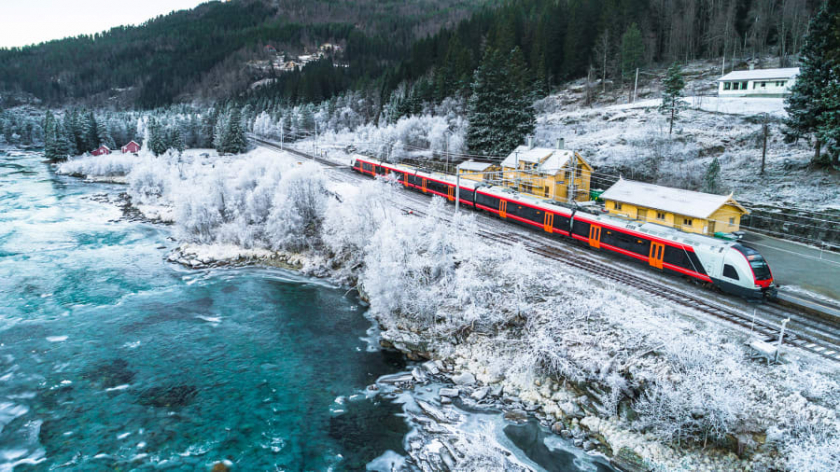
In addition to the unique beauty of the highlands, visitors can enjoy unforgettable views of crystal clear lakes, salmon-filled rivers, soaring mountains, the majestic Hardangerjøkulen glacier, and as the train approaches its final destination, glacial fjords.fjordsappeared before my eyes like the mythical Nordic fairy tales.
There are many other attractions along the railway line, such as the world-famous Flåm railway, or the port city of Bergen - gateway to the glacial fjords.fjordsand one of Norway's most popular tourist destinations - is waiting for you at the end of your trip.
Bernina Express, Switzerland
With countless funiculars, cable cars, funiculars, post buses and steam trains, Switzerland is a public transport paradise. With so many exciting journeys to choose from, it can be hard to pick a favorite. But the Bernina Express is so spectacular that it consistently ranks high on Swiss sightseeing lists.
Once an ancient trade route, the Bernina Pass is the highest railway line across the Alps. It crosses the source where snowmelt flows into the North Sea, Mediterranean Sea or Black Sea and is considered a bridge between Northern and Southern Europe, connecting different cultures and languages.
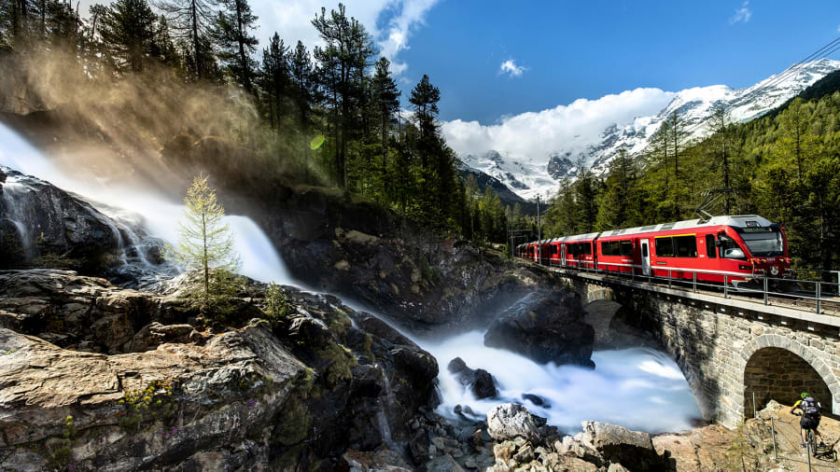
Each Bernina journey offers a different experience depending on the season. But the highlights include the amazing spiral viaduct at Brusio, where the train crosses over itself on a very tight hairpin bend, the run around Lago Bianco near the line’s highest point and the final leg through the streets of Tirano.
And remember, unlike most Swiss mountain railways, this is an international train, so travelers need to bring their passports.
The Canadian, Canada
The Canadian is Canada’s only remaining transcontinental train and is known as a window into the country’s breathtaking landscape. The four-day, 4,463-km journey on The Canadian, operated by VIA Rail, connects Toronto to Vancouver on a journey through endless forests, lakes and prairies.

In an age of instantaneous travel, The Canadian offers a completely different experience, where long-distance travel becomes more leisurely, comfortable and communal.
On board, communal dining tables and community rooms allow passengers to get to know each other and share stories from their travels. The train itself also has a nostalgic feel with its 1950s stainless steel passenger cars and sleeping berths with spacious cabins. In addition, the panoramic dome roof gives passengers a complete view of the magnificent Canadian landscape.
The Little Yellow, France
Located in the Pyrenees mountains, where France and Spain's Catalonia border, there is a spectacular, somewhat 'unusual' railway that weaves its way up through narrow gorges and deep valleys to reach France's only territory on the Iberian Peninsula.
Officially named Ligne de Cerdagne, the train is commonly known as "The Little Yellow Train" or "Metro of the Pyrenees".
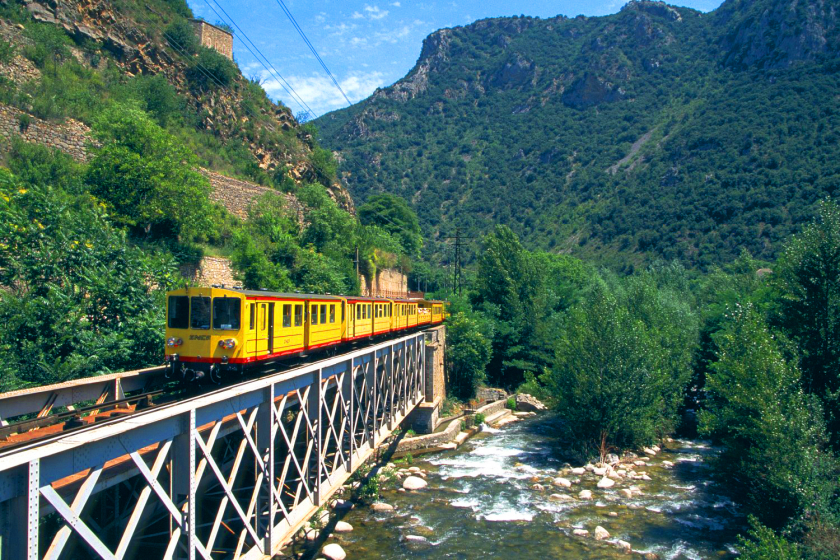
The most spectacular section of this 63km route climbs from Villefranche-de-Conflent – a UNESCO World Heritage town 31 miles west of Perpignan – to Odeillo-Font-Romeu.
Built between 1903 and 1909, the line is a spectacular feat of engineering, highlighted by the Pont Gisclard – the only railway suspension bridge in France. For railway fans, the old trains are worth the experience alone. In the summer, the trains have open-roof carriages, offering incredible 360-degree views, making it one of the most beautiful rail journeys in the world. Seven of the original 10 trains are still in operation.
From the line's summit at Bolquère-Eyne, France's highest railway station at 1,593 m, the route winds across a sunny plateau through the border town of Bourg-Madame to La Tour-de-Carol train station.
It may not be the most famous railway in the world, but you will never forget your ride on this spectacular little train that is filled with new things to discover.
The TranzAlpine, New Zealand
New Zealand may not have the ideal geography for trains, but The TranzAlpine is certainly one of the world's greatest rail journeys. Connecting the trendy cities of Christchurch and Greymouth on New Zealand's South Island, the TranzAlpine takes 4.5 hours to cover the 224km journey.
However, the figures cannot truly capture the incredible experience of this route with its diverse landscapes, from the Canterbury Plains to the snow-capped mountains of the Southern Alps, remote alpine meadows with lakes, streams and forests on the West Coast islands.
Swiss-style panoramic carriages allow you to make the most of this amazing journey. But The TranzAlpine also has the famous 'open air carriage' - a real highlight for many visitors. The carriages are open on both sides, allowing you to breathe in the fresh mountain air and capture the stunning New Zealand landscape.

For a more enriching experience, TranzAlpine passengers can now also listen to commentary sharing stories about the locations along the route, the country and the culture, in English and Mandarin,





